More Rules of Visualization
 Let the data speak for itself Let the data speak for itself

 example from The Doís And Doníts Of Infographic Design
 A chart is more memorable than a table of numbers
Compare writing of numbers to: using graphics A chart is more memorable than a table of numbers
Compare writing of numbers to: using graphics

 example from The Doís And Doníts Of Infographic Design
 Frame the reference: plotting numbers together can create the context Frame the reference: plotting numbers together can create the context
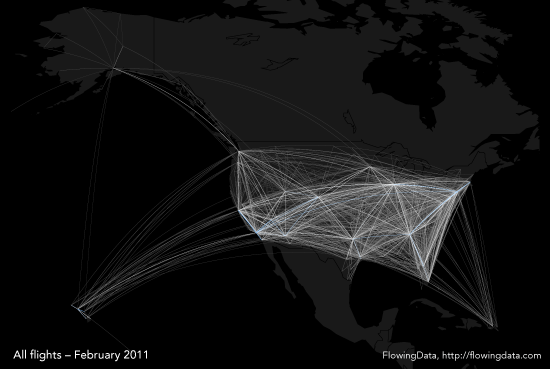
 Ensure that your axes are clear Ensure that your axes are clear
 Avoid confusing images Avoid confusing images
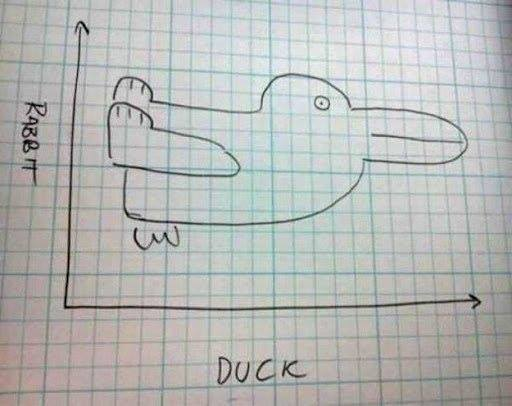
 Rich data, high visual impact Rich data, high visual impact
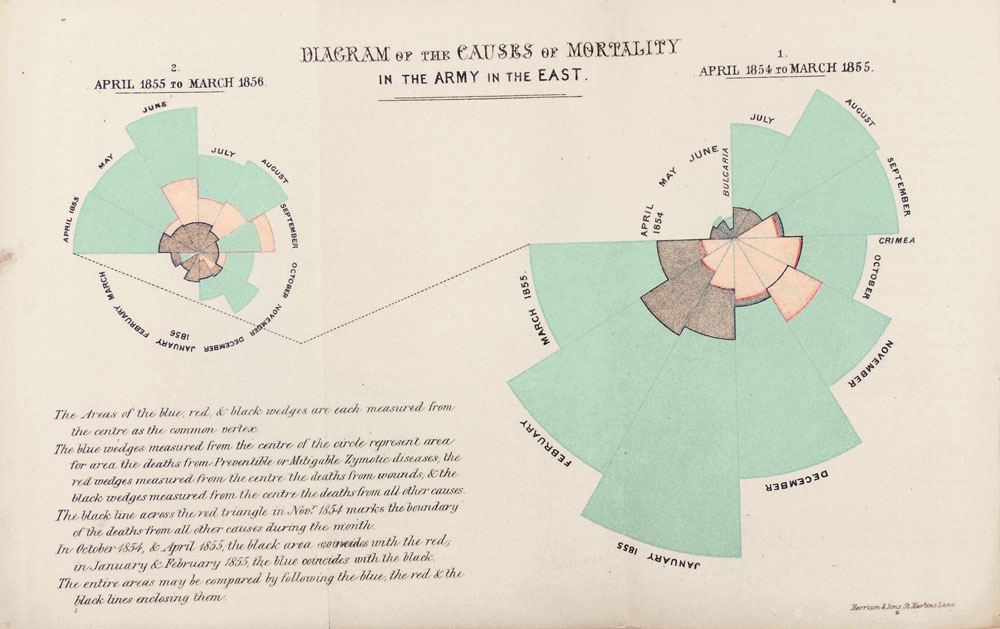
 Use color carefully (see Material Pallate) Use color carefully (see Material Pallate)

 Don't use multiple colors to represent the same kinds of data ... Use different shades of the same color. Don't use multiple colors to represent the same kinds of data ... Use different shades of the same color.
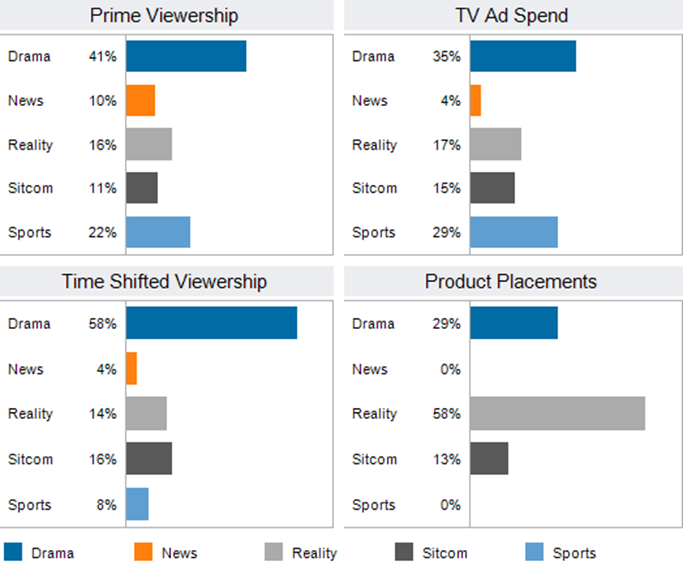
Borrowed from: Audience Report
 Don't use colors on the opposite side of the color wheel in multiple bar chart Don't use colors on the opposite side of the color wheel in multiple bar chart
 Use bright colors to emphasize important information Use bright colors to emphasize important information

 Mute color on non-highlighted segments Mute color on non-highlighted segments
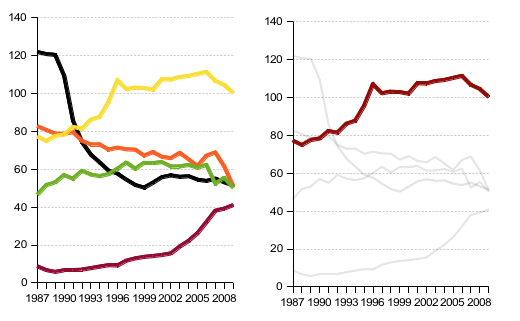
Image borrowed from Doing Lines Charts Right
 Don't set the scale with alternating light and dark colors in the middle of the scale Don't set the scale with alternating light and dark colors in the middle of the scale
 Avoid thematic representation of colors (holidays) Avoid thematic representation of colors (holidays)
 Don't use red to represent positive values Don't use red to represent positive values
 Arrange data from lightest to darkest (or vice versa) Arrange data from lightest to darkest (or vice versa)

 Convert colors to gray scale to see if there is enough contrast Convert colors to gray scale to see if there is enough contrast
 
 Ensure high contrast in representation of different data Ensure high contrast in representation of different data
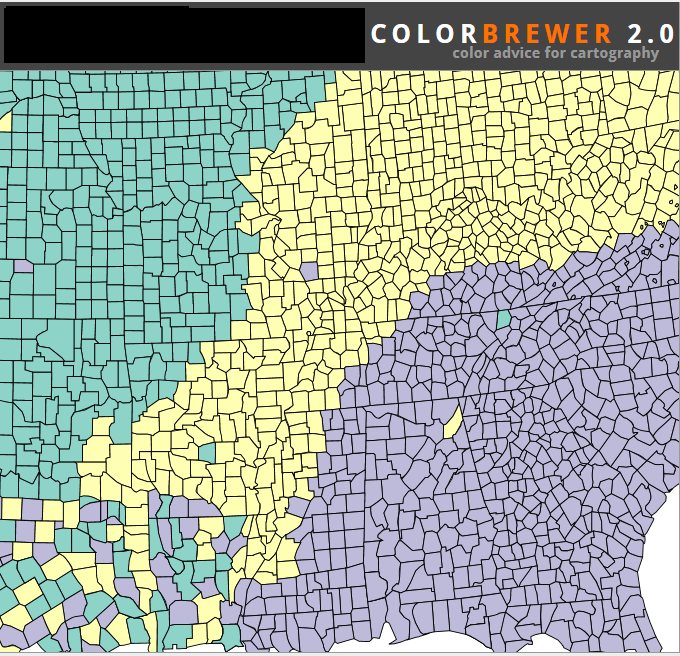
Image From Color Brewer
 Keeping the Attention
See Tips for creating effective and engaging data visualizations Keeping the Attention
See Tips for creating effective and engaging data visualizations
 Avoid shading the bars (in bar charts) with patterns Avoid shading the bars (in bar charts) with patterns
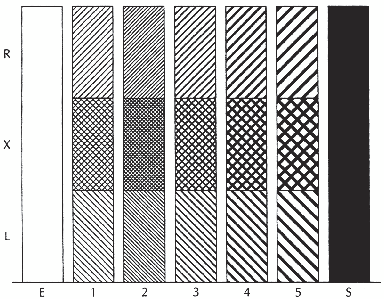
 Avoid 3-D bars Avoid 3-D bars

 Use lines that convey appropriate detail: too thin can fade into background while too thick hides details Use lines that convey appropriate detail: too thin can fade into background while too thick hides details
 Avoid too many lines in one graph; mute some to allow emphasis of the "point" Avoid too many lines in one graph; mute some to allow emphasis of the "point"
 Avoid broken bars in vertical bar charts, except when one is quite different (about 3 times) from other values Avoid broken bars in vertical bar charts, except when one is quite different (about 3 times) from other values
 Fonts and words Fonts and words
 Set type in black Set type in black
 Use as few fonts and font styles as possible; do not use bold and italic together Use as few fonts and font styles as possible; do not use bold and italic together
 Do not let font overwhelm the visualization Do not let font overwhelm the visualization
 Label directly on chart elements (instead of a legend) Label directly on chart elements (instead of a legend)
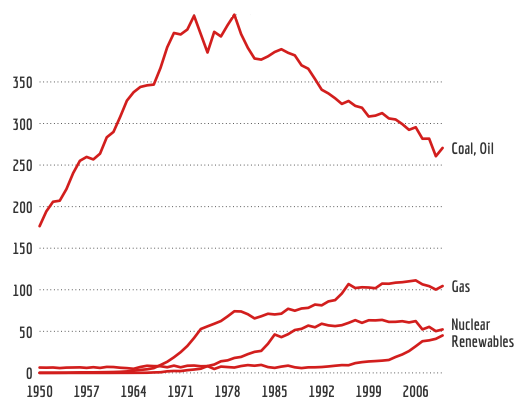
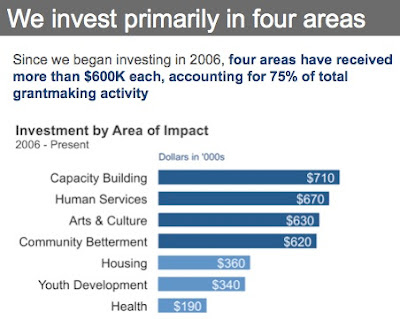
 Label change points or important points on the grid Label change points or important points on the grid
 Trends Trends
 Highlight Outliers Highlight Outliers
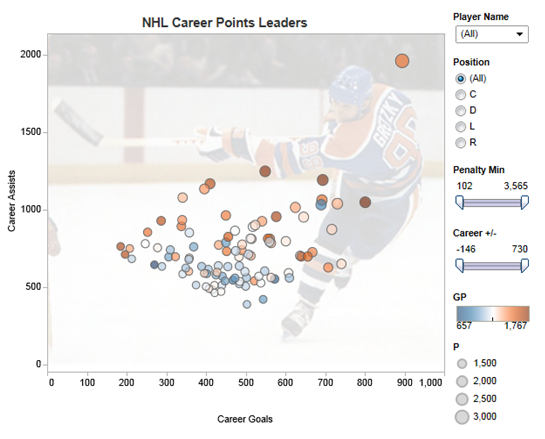
Borrowed from Data Remixed
 Use the full axes to represent the trend correctly Use the full axes to represent the trend correctly
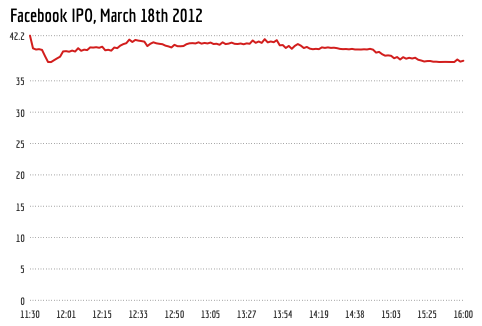
Borrowed from Doing the Line Chart Right
 Do not mix apples and oranges: do not chart two uncorrelated series on one graph Do not mix apples and oranges: do not chart two uncorrelated series on one graph
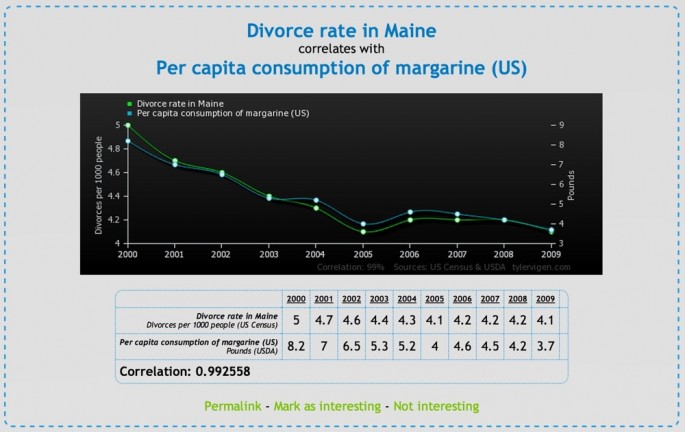
 It is appropriate to use the same axes for two data sets if they behave in tandem It is appropriate to use the same axes for two data sets if they behave in tandem
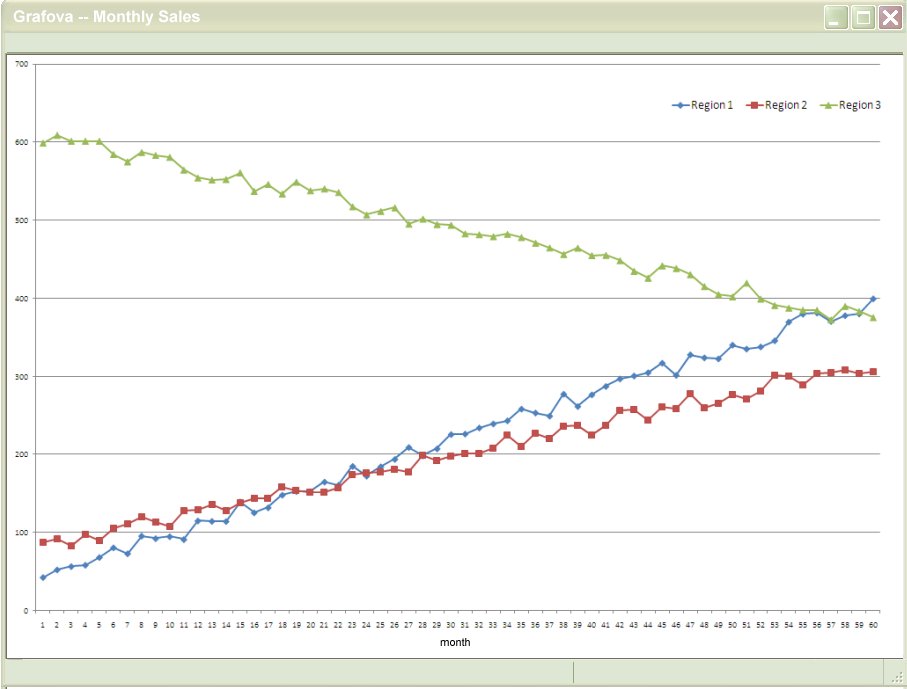
 Horizontal bars must be in numeric order (largest at top; most recent at top) Horizontal bars must be in numeric order (largest at top; most recent at top)
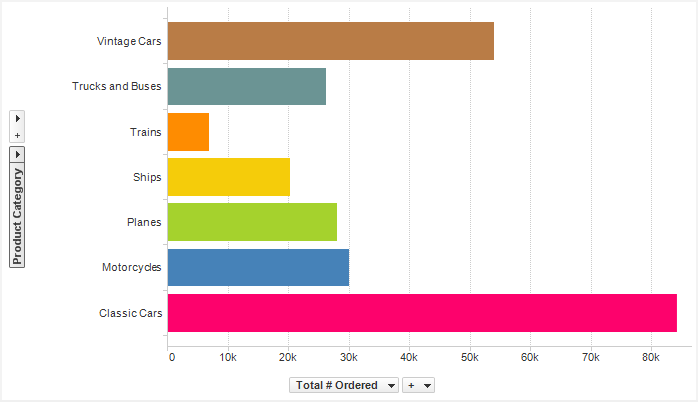
 Send the right impact: do you want to show performance in actual value or in percentage change Send the right impact: do you want to show performance in actual value or in percentage change
 Multiple ways to show time Multiple ways to show time
 Histograms Histograms
 Line Charts Line Charts
 Movement of bubble charts as shown in Visualizing empires decline Movement of bubble charts as shown in Visualizing empires decline
 Temporal Charts Temporal Charts
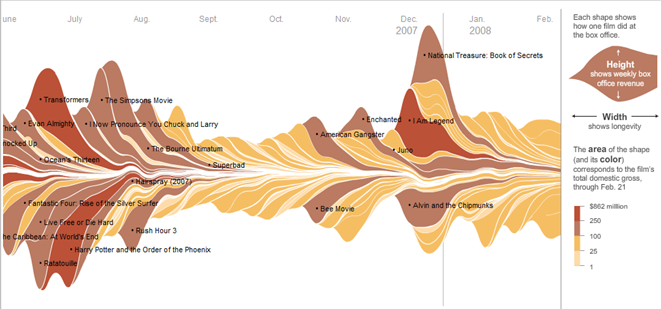
Borrowed from New York Times
 Sankey diagrams (shows flows) Sankey diagrams (shows flows)

Borrowed from: FOE Diagram: Up in Smoke
 Spray Charts Spray Charts
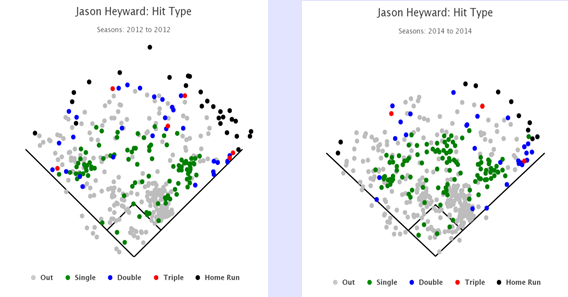
Borrowed from: Fan Graphs
 Grid Lines Grid Lines
 Use thin grid lines after every three to five entries (wider tables require more lines) Use thin grid lines after every three to five entries (wider tables require more lines)
 Small tables do not need any grid lines Small tables do not need any grid lines
 Place chart in a table to convey main message Place chart in a table to convey main message
 Alternate shading of rows in table can be distracting Alternate shading of rows in table can be distracting
 Pictograms (metriglypics) Pictograms (metriglypics)
 Pictograms should only be used when comparing a few data series Pictograms should only be used when comparing a few data series
 Pictograms should be simple Pictograms should be simple
 Avoid using different pictograms; use shading to represent different categories Avoid using different pictograms; use shading to represent different categories
 Basic Elements of Design Basic Elements of Design
| UM-St. Louis
Home Page
| College
of
Business Page | IS
Home Page | DSS
Home Page |
Page Owner: Professor
Sauter
(Vicki.Sauter@umsl.edu)
© Vicki L. Sauter. All rights reserved.
| 
















